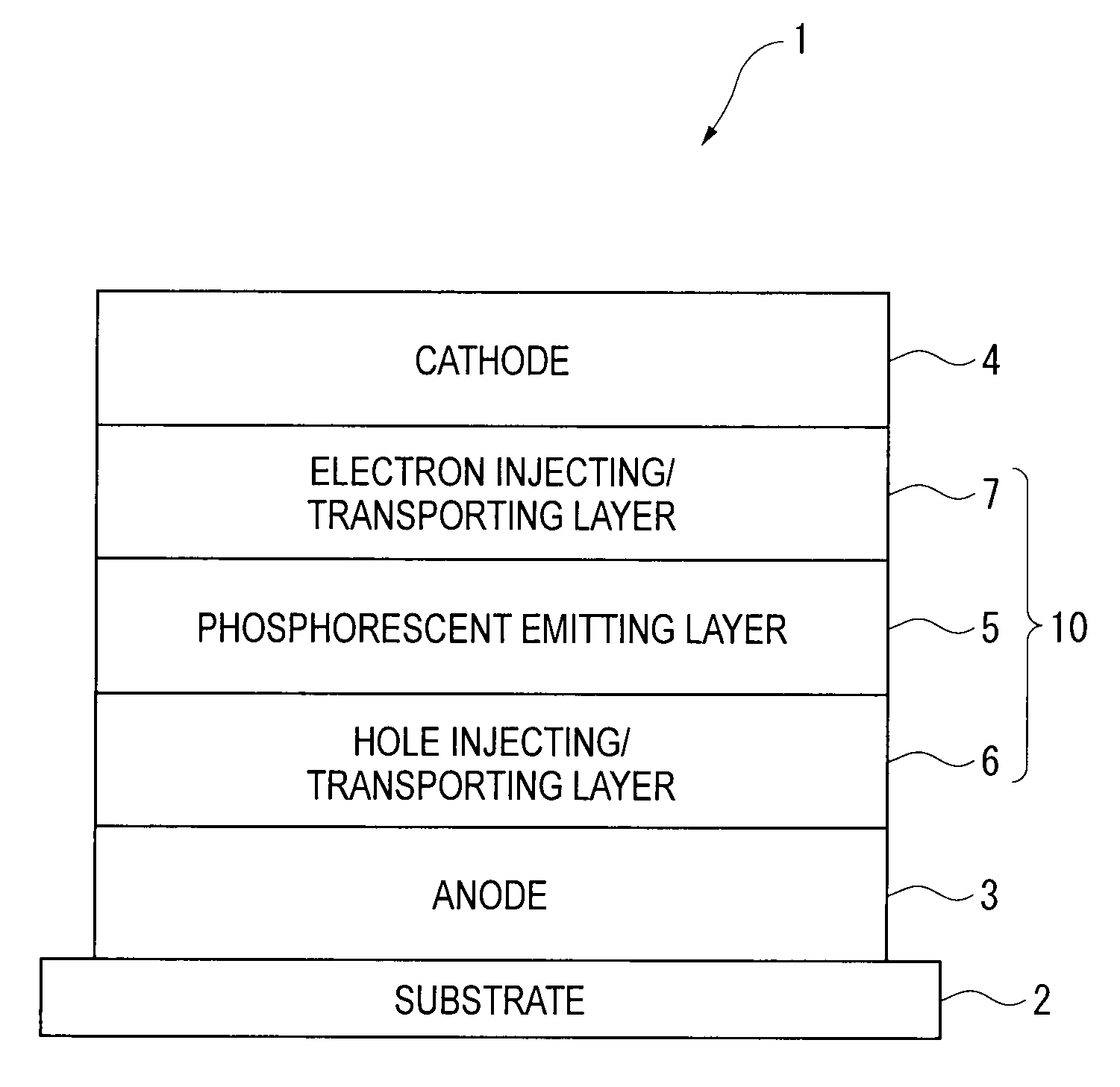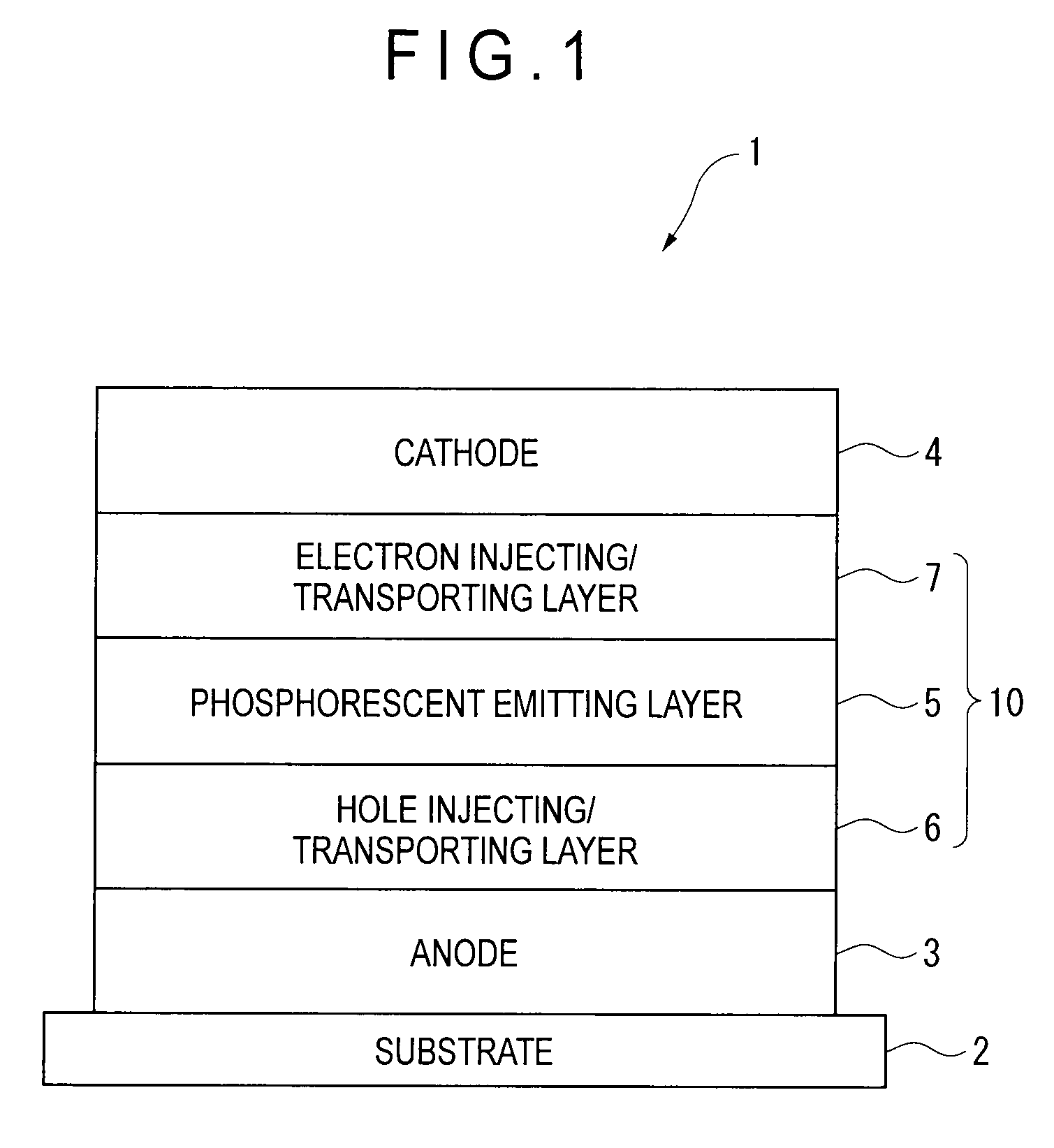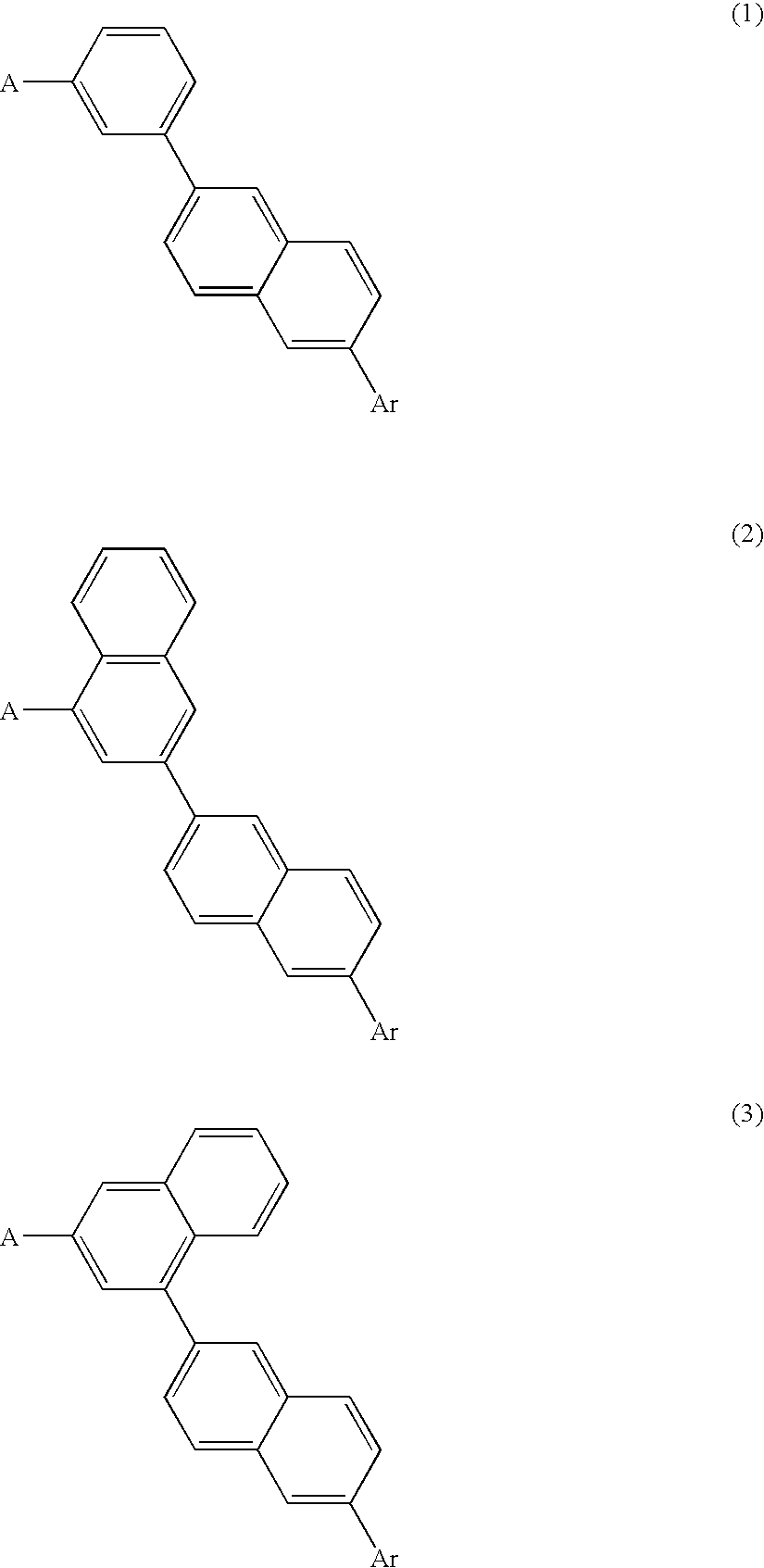Organic electroluminescence device and material for organic electroluminescence device
- Summary
- Abstract
- Description
- Claims
- Application Information
AI Technical Summary
Benefits of technology
Problems solved by technology
Method used
Image
Examples
synthesis example 1 (
Synthesis of Compound (A1))
[0285]
[0286]Under an argon gas atmosphere, 7.33 g (18 mmol) of bromide 1-2, 6.70 g (18 mmol) of boronic acid I-1, 420 mg (0.36 mmol) of tetrakis(triphenylphosphine)palladium(0), 80 mL of toluene, 80 mL of dimethoxyethane and 26 mL of 2M sodium carbonate solution were added together, and stirred for 12 hours at 85 degrees C. Subsequently, the reaction mixture was cooled down to room temperature and added with water, and the aqueous phase was removed while the organic phase was condensed. Addition of nitrobenzene then followed, and the residue was thermally melted and subjected to filtration. Then, the residue was refined by silica-gel column chromatography and recrystallized by toluene, such that 6.48 g of the compound (A1) was obtained at an yield of 55%.
[0287]FD mass analysis consequently showed that m / e was equal to 654 while a calculated molecular weight was 654.
synthesis example 2 (
Synthesis of Compound (A3))
[0288]
[0289]Under an argon gas atmosphere, 7.33 g (18 mmol) of bromide 1-2, 5.37 g (18 mmol) of boronic acid I-3, 420 mg (0.36 mmol) of tetrakis(triphenylphosphine)palladium(0), 80 mL of toluene, 80 mL of dimethoxyethane and 26 mL of 2M sodium carbonate solution were added together, and stirred for 12 hours at 85 degrees C. Subsequently, the reaction mixture was cooled down to room temperature and added with water, and the aqueous phase was removed while the organic phase was condensed. Addition of nitrobenzene then followed, and the residue was thermally melted and subjected to filtration. Then, the residue was refined by silica-gel column chromatography and recrystallized by toluene, such that 6.27 g of the compound (A3) was obtained at an yield of 60%.
[0290]FD mass analysis consequently showed that m / e was equal to 580 while a calculated molecular weight was 580.
synthesis example 3 (
Synthesis of Compound (A7))
[0291]
[0292]Under an argon gas atmosphere, 7.33 g (18 mmol) of bromide I-4, 5.37 g (18 mmol) of boronic acid I-3, 420 mg (0.36 mmol) of tetrakis(triphenylphosphine)palladium(0), 80 mL of toluene, 80 mL of dimethoxyethane and 26 mL of 2M sodium carbonate solution were added together, and stirred for 14 hours at 85 degrees C. Subsequently, the reaction mixture was cooled down to room temperature and added with water, and the aqueous phase was removed while the organic phase was condensed. Addition of nitrobenzene then followed, and the residue was thermally melted and subjected to filtration. Then, the residue was refined by silica-gel column chromatography and recrystallized three times by toluene, such that 5.02 g of the compound (A7) was obtained at an yield of 48%.
[0293]FD mass analysis consequently showed that m / e was equal to 580 while a calculated molecular weight was 580.
PUM
| Property | Measurement | Unit |
|---|---|---|
| Nanoscale particle size | aaaaa | aaaaa |
| Nanoscale particle size | aaaaa | aaaaa |
| Energy | aaaaa | aaaaa |
Abstract
Description
Claims
Application Information
 Login to View More
Login to View More - R&D
- Intellectual Property
- Life Sciences
- Materials
- Tech Scout
- Unparalleled Data Quality
- Higher Quality Content
- 60% Fewer Hallucinations
Browse by: Latest US Patents, China's latest patents, Technical Efficacy Thesaurus, Application Domain, Technology Topic, Popular Technical Reports.
© 2025 PatSnap. All rights reserved.Legal|Privacy policy|Modern Slavery Act Transparency Statement|Sitemap|About US| Contact US: help@patsnap.com



